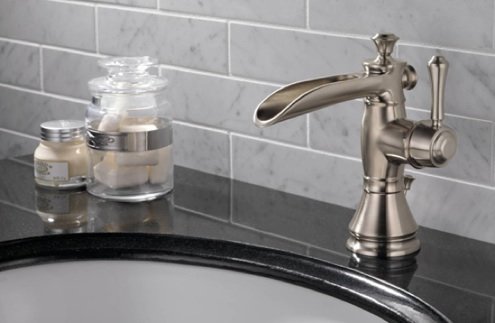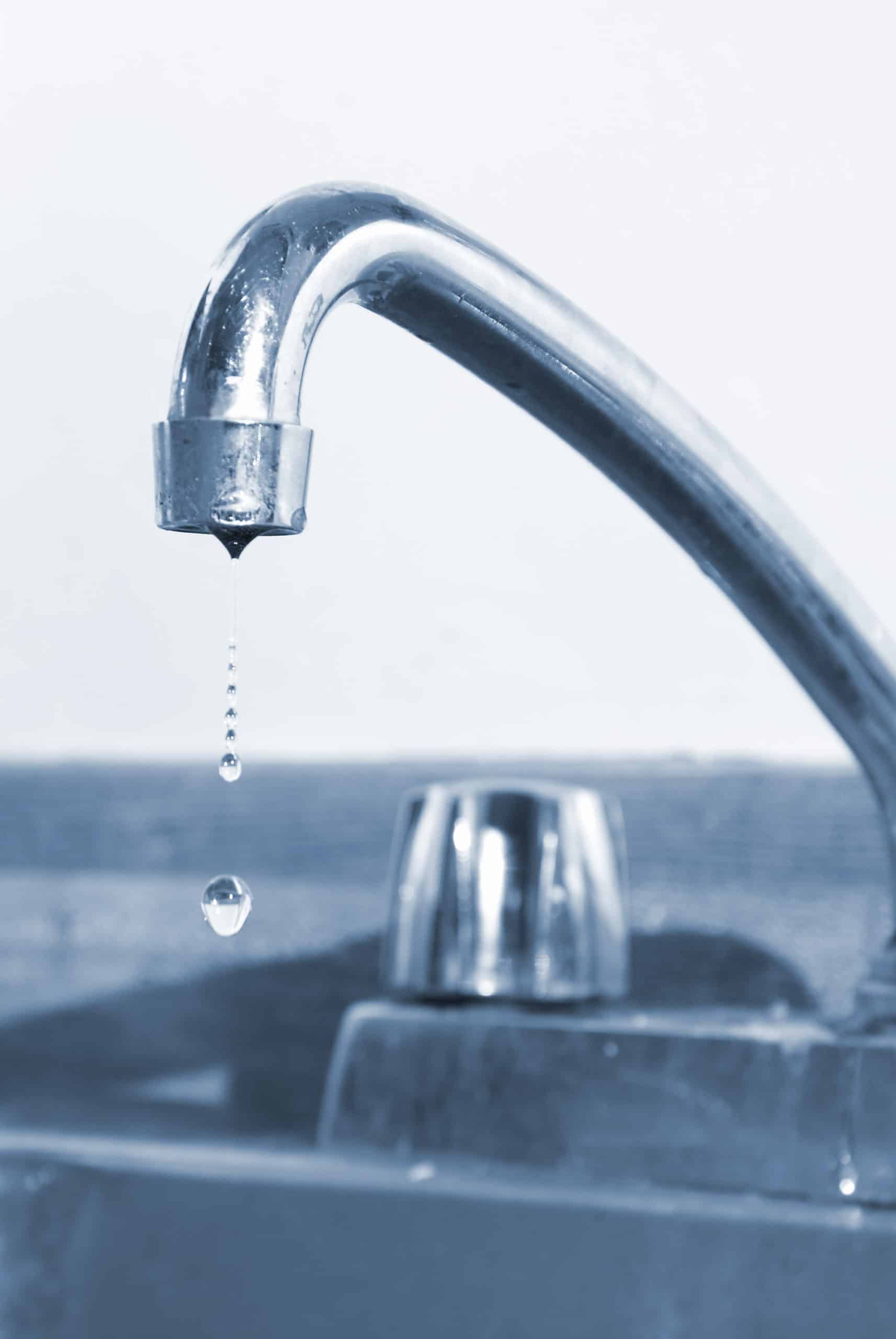Why It's Essential to Correct a Dripping Faucet
Why It's Essential to Correct a Dripping Faucet
Blog Article
The writer is making a few great points regarding 4 Common Reasons for a Leaky Faucet in general in this article directly below.

Trickling taps may feel like a small inconvenience, yet their influence exceeds simply the annoyance of the audio. From drainage to sustaining unnecessary economic prices and health threats, ignoring a trickling faucet can cause various repercussions. In this write-up, we'll delve into why it's crucial to resolve this typical house concern immediately and successfully.
Wastage of Water
Environmental Influence
Leaking faucets add significantly to water waste. According to the Environmental Protection Agency (EPA), a solitary faucet dripping at one drip per second can squander more than 3,000 gallons of water per year. This not just strains water sources however also influences environments and wildlife depending on them.
Step-by-Step Guide to Repairing a Dripping Tap
Tools Required
Before attempting to deal with a dripping faucet, collect the necessary tools, including a flexible wrench, screwdrivers, replacement parts (such as washers or cartridges), and plumber's tape.
Usual Tap Issues and Their Solutions
Recognize the type of tap and the certain issue triggering the drip. Common problems include worn-out washers, corroded shutoff seats, or faulty O-rings. Refer to maker guidelines or on the internet tutorials for detailed support on repairs.
Financial Expenses
Raised Water Expenses
Beyond the ecological impact, dripping faucets can pump up water costs considerably. The accumulated wastage gradually translates into greater energy expenses, which could have been avoided with prompt repair work.
Potential Home Damages
Moreover, extended dripping can result in damage to fixtures and surfaces bordering the faucet. Water build-up can create discoloration, corrosion, and even architectural concerns if left neglected, resulting in additional repair work prices.
Health and wellness Problems
Mold And Mildew and Mold Growth
The constant visibility of wetness from a trickling faucet develops an excellent atmosphere for mold and mildew and mold development. These fungis not just compromise indoor air high quality however also posture health risks, especially for people with respiratory conditions or allergic reactions.
Waterborne Conditions
Stagnant water in leaking faucets can end up being a breeding place for microorganisms and various other virus, increasing the danger of waterborne conditions. Pollutants such as Legionella germs thrive in stationary water, potentially causing severe diseases when ingested or breathed in.
DIY vs. Professional Fixing
Pros and Cons of Do It Yourself Repair Service
While some might attempt to repair a leaking tap themselves, DIY repairs come with their very own collection of difficulties. Without appropriate knowledge and devices, do it yourself efforts can intensify the issue or cause incomplete fixings, extending the problem.
Advantages of Employing a Specialist Plumber
Working with an expert plumber ensures that the underlying cause of the leaking faucet is resolved properly. Plumbing technicians possess the know-how and tools to diagnose and repair tap concerns efficiently, saving time and decreasing the risk of further damage.
Ecological Duty
Specific Contribution to Preservation
Taking obligation for fixing leaking faucets lines up with wider initiatives toward water preservation and environmental sustainability. Every person's actions jointly make a significant effect on maintaining valuable sources.
Lasting Living Practices
By prioritizing timely fixings and adopting water-saving practices, individuals contribute to lasting living practices that profit both existing and future generations.
Safety nets
Normal Upkeep Tips
To stop dripping faucets, carry out routine maintenance such as cleaning aerators, examining for leakages, and changing damaged components promptly. In addition, take into consideration mounting water-saving devices or upgrading to a lot more reliable components.
Relevance of Prompt Services
Addressing trickling taps as quickly as they're observed stops additional water waste and prospective damages, inevitably saving both water and money in the future.
Effect On Building Value
Perception of Well-Maintained Building
Preserving a home in good condition, consisting of dealing with maintenance problems like trickling faucets, enhances its perceived worth and value amongst prospective purchasers or occupants.
Impact on Resale Worth
Qualities with properly maintained plumbing components, consisting of faucets, command greater resale worths in the real estate market. Dealing with trickling taps can add to a positive impression throughout residential property assessments and settlements.
Verdict
Addressing a leaking faucet exceeds mere convenience; it's an important action towards conserving water, lowering monetary expenses, and protecting health and residential or commercial property. Whether via do it yourself repair work or professional support, doing something about it to repair trickling faucets is a little yet impactful way to promote liable stewardship of resources and add to a healthier, much more sustainable future.
How to Fix a Leaky Faucet: Step-by-Step Repair Guide
A leaky faucet may seem like a simple annoyance, but if it's not fixed promptly, that leak could cost hundreds to potentially thousands. From water damage to mold, mildew, and high water bills, even a tiny leak can be catastrophic if left unattended. Damage like this can even affect the overall value of your home, so it's important to take the right approach for leaky faucet repair. You may need the help of a plumber in some cases, but we've got a few tips you can try on how to fix a leaky faucet before calling the pros.
Four Faucet Types
When you're learning how to fix a leaky faucet, the first step is knowing what kind of faucet you're working with! There are four common types.
Cartridge Faucets
Cartridge faucets come in one- or two-handled varieties. In one-handled cartridge faucets, hot and cold water combines in a single cartridge. In the two-handled versions, hot and cold water are controlled separately and mixed in the faucet.
Ball Faucets
Ball faucets have a single lever you push up and down to adjust the pressure and rotate to change the temperature. A slotted metal ball controls the amount of water allowed into the spout.
Compression Washer Faucets
They're the oldest type of faucet, but they're still used in many homes — especially older ones. Compression faucets have two separate handles that, when turned, raise or lower the washer that seals a water valve. This valve stops water from flowing through the faucet when it is turned off.
Disc Faucets
Disc faucets rarely need to be repaired due to their maintenance-free design. The water flow is controlled by two discs — the upper one raises and lowers against a fixed lower disc, creating a watertight seal. If your disc faucet starts leaking, you may need to replace the seals or clean residue buildup from the inlets.
Fixing a Leaky Faucet
Step 1: Turn Off the Water
Whether you're learning how to fix a leaky bathtub faucet or how to fix a leaky kitchen faucet, always turn off the water supply to your working area when you're fixing a leak. The last thing you want is a flood added to your list of things to fix.
Look for the shutoff valves below your sink or around the tub and turn them clockwise to stop the water flow. If your faucet doesn't have shutoff valves, you may need to turn off the water for the whole house. Check to make sure it's off by turning the faucet on. If nothing comes out, you're ready to start the repair.
Step 2: Take Apart the Faucet
How you disassemble your faucet depends on the type of fixture you have. You can use a flathead screwdriver to remove the caps on top of the handle or handles for cartridge and compression faucets. Inside, you should see handle screws. Unscrew these with a screwdriver to remove the handle.
Disc- and ball-style faucets will typically have an inlet screw near the handle, and removing that will reveal the interior of the faucet.
Detach the Valve Stem
For cartridge- and compression-style faucets, you'll see the inner valve stem or cartridge once you remove the faucet handles. If you have a compression faucet, unscrew the brass valve stem. If you have a cartridge faucet, pull out the cartridge. If your cartridge has been in place for a while, it may require some tools or extra force to remove it due to mineral deposits.
Examine and Replace Parts
Once you've removed the parts, check them out to confirm what needs to be replaced. You may see corroded rubber washers, O-rings, stems, or cartridges. On a ball-style faucet, check the seats and springs for damage.
If you need to repair a leaky disc faucet, check the inlet and seals on the lower disc.
Once you determine what parts must be replaced, visit your local hardware store. Bring the damaged parts with you to ensure you can purchase the correct components to replace them.
Clean Valves and Faucet Cavity
If you've removed a stem or cartridge, you may notice mineral buildup in the faucet's threads. Use white vinegar to clean the valve seat by soaking it for a few minutes, then scrub it away with a soft toothbrush and rinse with warm water. You can also clean the interior of the faucet in the same way.
Reassemble the Faucet
Once your faucet is cleaned and the required parts have been replaced, it's time to reassemble it. Put the pieces back together and slowly turn the water supply back on. Doing this slowly is crucial because too much initial water pressure can damage the new hardware you've just installed.
https://homewarranty.firstam.com/blog/how-to-fix-leaky-faucet

We hope you enjoyed reading our part about Why Is It Important To Fix Your Leaking Tap/Faucet?. Thank you so much for taking a few minutes to read through our article post. Enjoyed our blog posting? Please quickly share it. Help another person check it out. Kudos for being here. Return soon.
Report this page